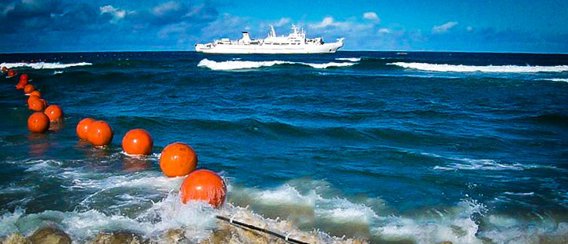How to mitigate submarine cable outage
In news reports, we regularly hear about submarine cables that have been critically damaged, leaving a country or island without service for several hours before a redundant solution can be found. In some cases, for instance if there is zero redundancy, this can take several days. So, how can these situations and their impacts be minimized in order to prevent revenue loss for service operators and interruptions in Internet connections affecting hundreds of families?

First, let’s take a look at the causes. Submarine cables are most vulnerable within the first 500 m of the landing station, at significant choke points, and in shallow water. The same also applies to cables that link oil rigs and wind farms to the mainland, as illustrated.

The top causes of damage to submarine cables are as follows:
- Fishing
- Anchors
- Dredging
In order to speed up submarine cable restoration and, in some cases, prevent massive failure, it is essential that cables be monitored. Early identification and correlation methods are key, as detailed below:
A monitoring solution that can be easily deployed at each cable landing station is certainly a key consideration. This allows for the detection of major issues, such as broken cables, in addition to identifying minor anomalies, such as severely bent cables and cables snagged on rocks, and prevents cable maintenance from being reactive in nature.
A monitoring solution along with an automatic identification system (AIS) that includes an overlay of the submarine cable routes provides alerts whenever any anchors are resting on cables. The information provided by AIS equipment can be displayed on a screen, which is an effective method to know the fault position.
As demand for low-latency submarine links continues to grow, some companies that invest in submarine cables add resale value to their links by offering an over-the-top active or passive monitoring service. When a leased fiber is impacted, a monitoring solution that allows the associated Service-level Agreement (SLA) to be managed by the leaseholder is also an effective way to avoid costly issues, and enables documentation of downtime and tracking of SLA compensation.
By using sensitive and long-distance OTDR-based monitoring with a good set of thresholds definitions, the end user is alerted to a number of different fault conditions, such as minor degradations and cable cuts. These methods can also be applied over a certain length of cable.
Various solutions are currently available, including EXFO’s Fiber Guardian remote fiber monitoring units.




